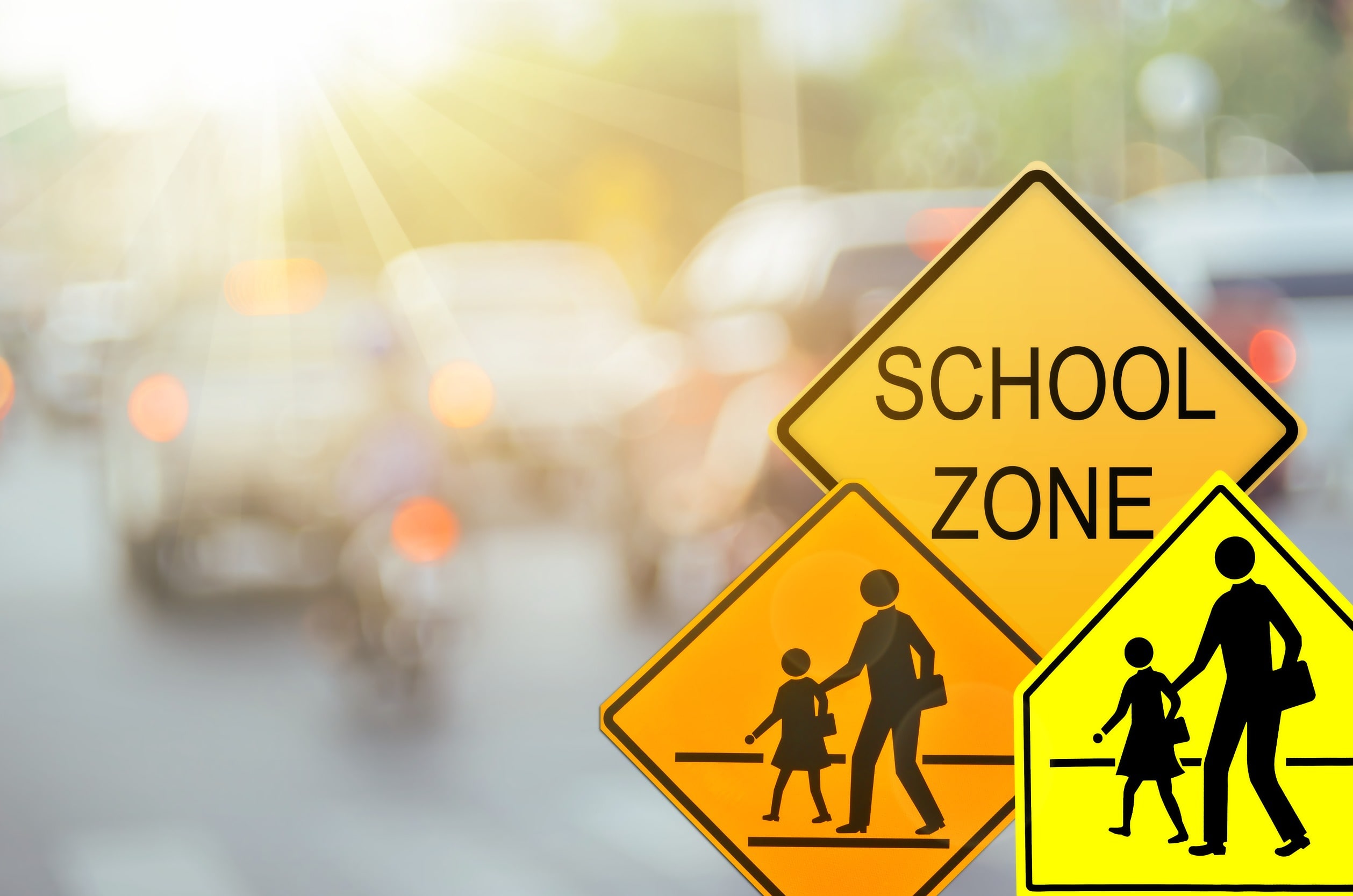5 Tips for Keeping Children Safe When Driving Near School Zones
August 15, 2023 | Category: Child Injuries | ShareThousands of Southwest Florida school children returned to school this month. It can be one of their favorite times of the year – new teachers, different classmates, and sometimes a new school. It is like a fresh start. However, school zones may be challenging.
 In 2022, Florida had 2,838,866 students who were enrolled in a total of 4,202 schools in 69 school districts. There were also 163,558 public school teachers and thousands of support staff. Students also may walk or ride their bikes to school. All of these people, along with school bus drivers and drivers dropping and picking up students cause heavy congestion around school zones.
In 2022, Florida had 2,838,866 students who were enrolled in a total of 4,202 schools in 69 school districts. There were also 163,558 public school teachers and thousands of support staff. Students also may walk or ride their bikes to school. All of these people, along with school bus drivers and drivers dropping and picking up students cause heavy congestion around school zones.
Florida school districts are challenged with keeping students safe in school zones. Safe Routes to School (SRTS) encourages school administrators to tailor a combination of engineering, enforcement, education, and encouragement strategies to address the specific needs of their schools. When there are better organized and safer traffic conditions, students are safer.
Naples officials said the Florida Department of Transportation (FDOT) has implemented new guidelines to emphasize the safety of students and pedestrians in school zones. What used to be a 20 mph speed limit when lights flash around schools are now reduced to 15 mph, depending on the street's posted speed limit. In areas where posted speeds are 35 mph or higher, a reduced school zone speed limit of 20 mph is now in effect.
Here are 5 specific tips recommended by SRTS to prevent accidents when driving around school zones:
1. "Be on The Lookout for School Zones
School zones are designated areas near schools and playgrounds. These areas are specifically designed to help keep children safe as they walk to and from school.
You should always remain alert when driving, and you should keep an eye out for signs and other indications that you are entering a school zone. There are many types of pavement markings, school zone signs, and crosswalk barricades that should alert you to slow down and pay special attention to your surroundings.
2. Expect More Traffic in School Zones
School zones are clearly marked because there is a lot more congestion around schools as children walk to school and as buses and parents try to drop off or pick up children each day.
Drivers often make mistakes when they are caught in traffic, stressed, or running late for work.
You should schedule at least 15 extra minutes each day when driving through a school zone, and if you need to drop off or pick up your child, then you should expect at least 20-minute delays.
3. Reduce Driving Speeds in School Zones
Since school zones are areas that are specially designed for student safety, drivers need to reduce their speed whenever they enter a school zone.
Speed limits often drop in these areas because injuries and damage resulting from an accident are reduced when vehicles are traveling at lower speeds.
A school zone speed limit can drop as low as 10 or 15 miles per hour to improve the reaction time of drivers and mitigate risks associated with an accident.
Pedestrians always have the right of way, and you should expect children to run out into the road without warning.
This means that you need to reduce your driving speed in a school zone and be prepared to hit your brakes with little warning.
4. Watch Out for Pedestrian Crossings
Schools are high-trafficked areas, so you can expect children, teachers, and parents traveling throughout the day.
If you are traveling through a school zone, then you will likely find yourself in the middle of lots of pedestrian traffic depending on the time of day.
When you see a crosswalk sign in a school zone, you should slow down even if you do not see anyone crossing the street. This is an excellent practice to get into so that you anticipate pedestrians.
If there is traffic, make sure you do not block crosswalks or stop in the middle of them.
Most school zones have flashing lights that warn approaching motorists that pedestrians are present, and you should remain aware as you approach crosswalks in a school zone.
5. Stop for School Buses
In all 50 states, it is illegal to pass a stopped school bus that has a stop sign extended and lights on. This indicates that children are getting on or off the bus.
Most bus-related accidents happen because cars do not head to this law, and you should know what the law requires motorists to do when they approach a school bus on the road.”
Fort Myers Child Injury Attorney fights for the rights of accident victims.
"We at Spivey Law Firm, Personal Injury Attorneys, P.A. wish every student a wonderful and safe school year. However, should you or a loved one be injured because of the negligence of another, our legal team is available to assist you 24/7 at 239.337.7483, toll-free at 1.888.477.4839, or contact us online at SpiveyLaw.com. There are no costs or attorney fees until we receive a monetary recovery for you,” said Fort Myers Child Injury Attorney Randall Spivey.

